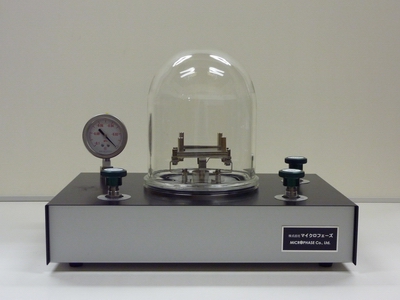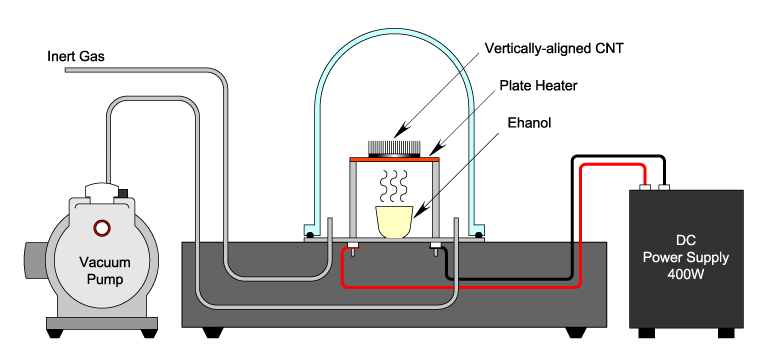Back

Main unit of MPCNT-Basic
Purpose: The basic model of the mini CVD system is designed for researchers to grow vertically-aligned carbon nanotubes on substrates (Si, Quartz, metals, ceramics) using ethanol liquid (without using any hydrocarbon gas) as carbon source.
Features:
・Ethanol injection unit is equipped; flammable hydrocarbon gas is not required.
・CNT growth takes only a few minutes, the total operation process is less than 30 minutes.
・Compact size, simple operation, low price, high quality CNT.
This is a mini-size, simplified carbon nanotube (CNT) synthesis system which uses ethanol as a carbon source. Ethanol is a very convenient material for producing carbon nanotubes. It does not require combustible gas cylinders like methane or acetylene gas, and allows CNT synthesis experiments to be conducted anywhere.
The system does not require the use of reduction gas (hydrogen gas) for catalyst reduction, because ethanol also has a strong metal-reduction effect. The meta-reduction effect of ethanol enables CNT to be directly grown on alloy materials such as NiCu, SUS, etc. without the deposition of catalyst thin film, because the catalytic Ni, Fe, or Co elements in the alloys are segregated as catalytic particles.
With the system, highly crystallized, vertically aligned CNT can be grown on various types of substrates such as silicon, quartz, stainless steel, metals, and ceramics. The size of the system is as small as a personal computer. The operation is simple, and the entire process only takes 20 to 30 minutes. The transparent glass chamber enables the process of CNT growth to be directly observed. This system is suitable for CNT synthesis experiments in university laboratories and as experimental equipment for educational programs.
We developed this unique CNT synthesis system with technical support from the Japan Science and Technology Agency (JST), the research institute of the Japanese government. We obtained patents for this technology in many countries around the world.
* Note: A thin catalyst film should be deposited on the substrates in advance of the CNT growth process. If a customer does not have a catalytic film formation system (e.g., a vacuum deposition apparatus or spattering system), we recommend our MPCNT-Premium model, a complete system covering a range of processes from catalyst formation to CNT growth, or Highly-functioned vacuum deposition apparatus MPVAP . Substrates with a catalytic membrane are also available as consumables at Microphase.

Figure of system components.
MiniCVD-Basic